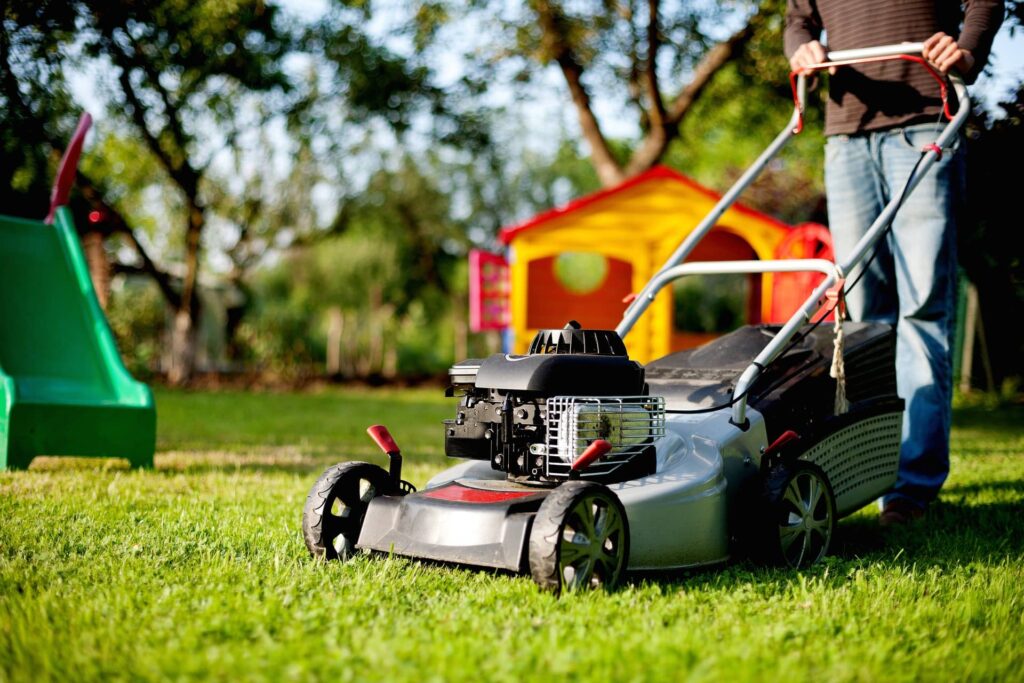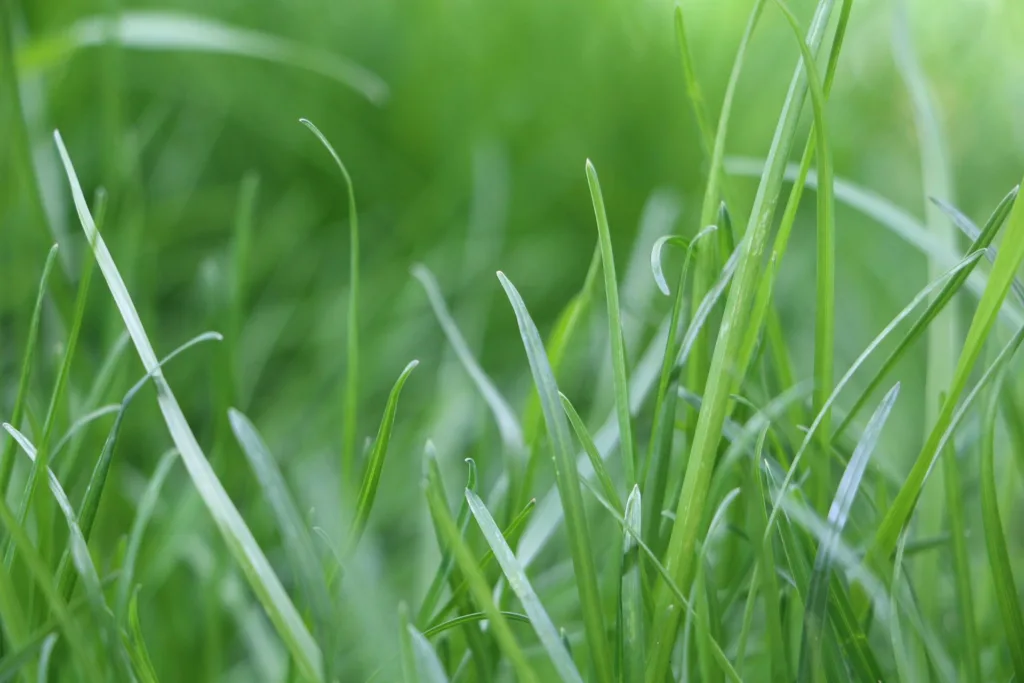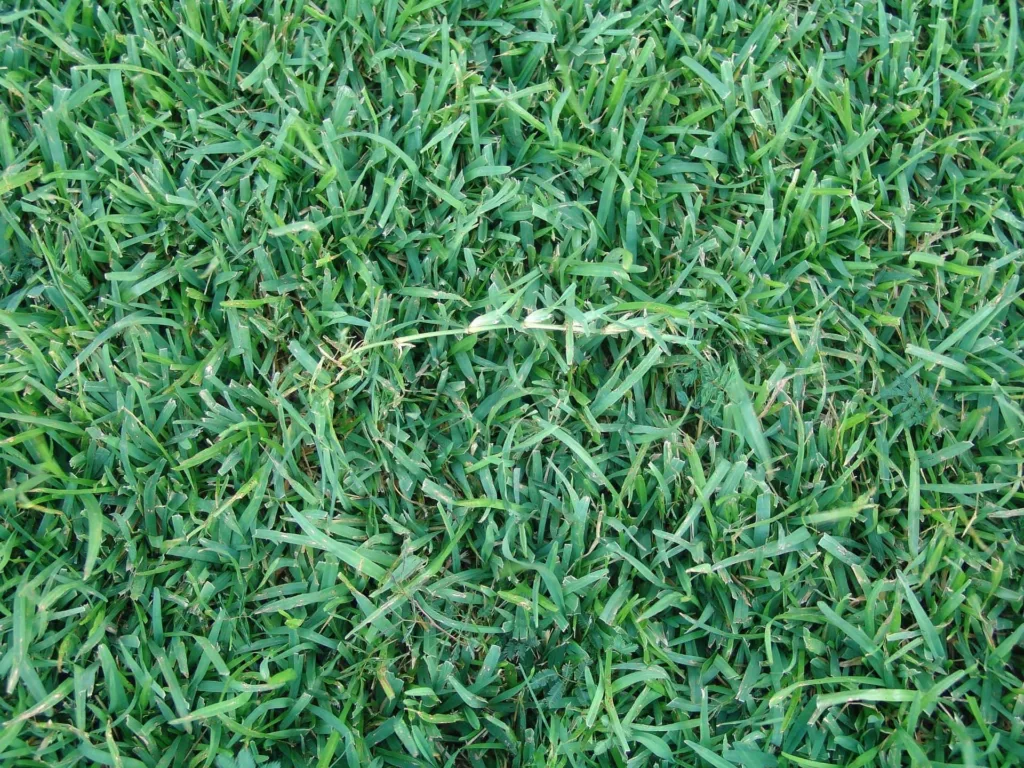Bentgrass is a standout in the realm of cool-season grasses, revered for its fine texture and ability to form dense, attractive turf. Whether you’re aiming to create a lush backyard lawn or a professional-grade putting green, understanding the nuances of bentgrass care is essential. Herein, we’ll delve into everything from selecting the right bentgrass seeds to practical maintenance tips, ensuring your lawn stays healthy and vibrant.
Introduction
Bentgrass stands out as the grass of choice for anyone dreaming of a flawless, golf course-worthy lawn or the perfectly uniform ground cover of luxurious gardens. Originally acclaimed for its performance on the putting greens, this cool-season grass boasts an exceptional ability to create smooth, velvety lawns that can handle low mowing and maintain a rich green hue.
In this comprehensive guide, we’ll walk you through everything from choosing the best bentgrass variety for your needs to understanding the detailed care required to keep your lawn flourishing year-round.
Whether you’re an amateur horticulturist ready to transform your backyard or a seasoned greenskeeper fine-tuning your maintenance tactics, you’ll find invaluable insights tailored to crafting and sustaining lush, vibrant turf. Stay tuned as we delve deeper into the world of bentgrass.
Understanding Bentgrass
Bentgrass, formally recognized as Agrostis, is a cool-season perennial that’s a favorite on golf courses and high-end lawns primarily due to its fine texture and capability to form a dense, smooth mat. Commonly utilized varieties in landscaping and golf greens include creeping bentgrass (Agrostis stolonifera), colonial bentgrass (Agrostis capillaris), and velvet bentgrass (Agrostis canina).
Creeping bentgrass is particularly prized for its aggressive growth and ability to tolerate low mowing, making it perfect for the immaculate surfaces of golf putting greens. Colonial and velvet types, meanwhile, are more often recommended for lawns due to their more upright growth and slighter less demanding maintenance needs.
Ideal growing conditions for bentgrass include cool, humid environments. It thrives in well-drained, sandy soils and prefers a pH ranging from 5.5 to 6.5. It’s less tolerant of extreme heat and dry conditions compared to more rugged grasses, making it more suitable for northern climates or higher altitudes in the south.
When placed side by side with Kentucky bluegrass, another popular cool-season grass, bentgrass differs significantly. For starters, bentgrass has a finer blade texture and generally creates a denser turf surface. Kentucky bluegrass, on the other hand, is valued for its robustness and ability to recover from damage due to its rhizomatous growth pattern.
Maintenance needs between the two also diverge markedly. Bentgrass requires frequent, careful mowing and generally more intensive overall care, particularly if aiming for the golf-course type of turf.
It demands consistent moisture and is more sensitive to pests and diseases. Kentucky bluegrass is somewhat less high-maintenance, tolerating higher mow heights and less frequent watering, making it a friendlier option for casual lawn caretakers.

Preparing to Plant Bentgrass
Planting bentgrass, whether for a high-quality lawn or a smooth golf green, begins with choosing the right time and preparing the soil meticulously to promote a vigorous start. The ideal planting times for bentgrass typically lie in the cooler months of early fall or late spring. This timing allows the grass to establish itself during mild weather conditions, avoiding the extreme stresses of summer heat or winter cold.
Selecting the Best Planting Time
Fall is often favored for seeding bentgrass because the soil is still warm enough to encourage germination, but the air temperature is cooling down, which reduces the risk of seedlings drying out. In spring, aim to seed after the last frost to ensure that the young grass won’t be exposed to freezing temperatures, which can hinder growth or kill tender shoots.
Soil Preparation and Seeding
A successful bentgrass lawn or green starts well beneath the surface, with thorough soil preparation. Here’s a practical step-by-step guide to preparing your planting area:
- Soil Testing: Before anything else, test your soil’s pH and nutrient levels. Bentgrass prefers a slightly acidic pH (around 5.5 to 6.5). Adjusting your soil based on the test results can dramatically increase your lawn’s performance.
- Cultivation: Till the soil to about 2-3 inches deep. This depth is sufficient to loosen any compacted soil and allow for better seed contact.
- Grading and Leveling: Ensure the planting area is as level as possible with a slight slope for optimal drainage. Use a rake to smooth out any bumps or depressions in the soil.
- Adding Amendments: Based on your soil test, enrich the soil by adding necessary amendments. Compost or peat moss can improve soil structure and nutrient content, particularly in clay soils.
- Seeding: Sow the bentgrass seed evenly at the recommended seeding rate. For best results, use a broadcast spreader to ensure even distribution.
- Light Raking and Rolling: After seeding, lightly rake the area to help seeds make good contact with the soil. Follow with a light roller to press the seeds into the soil without burying them deeply.
- Moistening: Initially, keep the soil consistently moist but not waterlogged. Gentle, regular watering several times a day encourages germination and establishment.
Adhering to these detailed steps provides a firm foundation for your bentgrass, setting the stage for a lush, durable turf. As noted by experts at UCANR, proper soil preparation and careful seeding can dramatically affect the health and aesthetics of your bentgrass lawn, paving the way for less intensive maintenance and better overall turf health.
Essential Bentgrass Lawn Care
Taking care of a bentgrass lawn isn’t terribly complex, but it does require some specific tactics to keep it looking its best. First and foremost, let’s talk watering. Bentgrass likes moisture but despises soggy roots.
Aim for deep, infrequent watering to encourage a robust root system, which is typically around one inch of water per week, either from rainfall or your hose. Early morning is the best time to water, allowing the grass to dry off before evening, which can help prevent the development of fungal diseases.
Next up, we have fertilizing. Bentgrass needs a fair amount of nutrients to maintain its lush, green appearance. Spring and fall applications should suffice, using a balanced, slow-release fertilizer that promotes healthy growth without going overboard. Remember, more is not always better; stick to the recommended rates on the fertilizer package to avoid nutrient burn.
The pH level of your soil also significantly affects the health of your bentgrass. Ideally, this grass thrives at a soil pH between 5.5 and 6.5. It’s a good idea to test your soil’s pH every couple of years and adjust accordingly using lime if it’s too acidic or sulfur if too alkaline.
Lastly, let’s discuss mowing. The right mowing height can make a big difference in the health and appearance of your bentgrass. Keep your blades sharp and your mower set to about one-half to three-quarters of an inch.
Yes, it’s low, but that’s how bentgrass likes it. Mowing at this height encourages denser growth and a smoother surface. Be consistent with your mowing schedule, cutting no more than one-third of the grass blade at a time to avoid stressing the grass.
Together, these focused practices — smart watering, judicious fertilizing, careful pH management, and proper mowing — are the core ingredients for maintaining a healthy, attractive bentgrass lawn. It’s about giving the grass what it needs, when it needs it, and keeping routines consistent and lawn stress minimal.
Advanced Maintenance: Creeping Bentgrass
Creeping bentgrass demands a tailored approach to maintenance, especially when it takes the stage at golf courses, where its performance is under constant scrutiny. Understanding how to nurture this grass will ensure it remains not only alive but thrives.
Aeration: Your First Line of Defense
One of your primary strategies for maintaining creeping bentgrass is aeration. This process combats soil compaction, allows air and water to penetrate deep into the soil, and encourages healthy root growth. For optimal results, aerate during the growth peaks in spring and fall when the grass can recover quickly.
Thatch Management: Keep It Thin
Thatching is more than a simple clean-up; it’s vital for preventing disease and promoting growth. Creeping bentgrass tends to develop thatch quickly due to its dense growth habit. Regularly removing thatch helps to ensure water, nutrients, and air reach the soil, crucial for healthy grass. Plan to dethatch annually or semi-annually depending on the thatch accumulation and soil type.
Focused Irrigation: Less Is More
In the realm of watering, creeping bentgrass does best with the “less is more” philosophy. Overwatering can lead to fungal diseases, which are particularly problematic in cool, moist environments. Instead, water deeply but infrequently to encourage the roots to grow deeper, seeking moisture from below. This not only strengthens the grass but enhances drought resistance.
Spot Check: Monitor and Respond
Regular monitoring helps catch issues before they escalate. Check for signs of stress like discoloration or patchiness. Responding quickly to such signs by adjusting watering practices, fertilization, or pest control measures can save your lawn.
By implementing these advanced maintenance practices, your creeping bentgrass can become the epitome of perfection—resilient, vibrant, and a pleasure to behold whether it’s gracing a golf course or your backyard.
Bentgrass Disease Control
Battling the blight and keeping the green: when it comes to bentgrass, staying ahead of disease is not just a practice, it’s a necessity. Bentgrass, particularly the creeping variety favored on golf courses, often rolls out the welcome mat for an array of stubborn diseases. Key culprits include dollar spot, brown patch, and fusarium blight, among others.
Prevention, as always, starts with solid lawn care. Proper watering and mowing, along with maintaining an appropriate balance of nutrients, go a long way. Here’s the deal—frequent, light watering generally does more harm than good, encouraging conditions ripe for fungal outbreaks.
Instead, aim for deeper, less frequent watering sessions to keep the turf robust without being soggy.
Fungicides? Yes, they have their place in the toolkit, but timing and selection matter. A preventative approach involves applying fungicides before the disease takes hold, ideally based on local alerts or historical issues in your area. Rotate products to avoid resistance build-up, and always, always follow the label directions.
Finally, don’t overlook the role of air circulation and sunlight exposure. These natural elements are invaluable allies in your quest to keep diseases at bay, particularly in densely shaded areas where moisture lingers and diseases thrive. So, trim back those overhanging branches and let your lawn breathe—it might just be the simplest tip to implement in your disease-fighting regimen.

Mowing and Watering Best Practices
Mowing Bentgrass
When it comes to mowing bentgrass, think precision and consistency. For a start, setting your mower to the right height is crucial. The ideal mowing height for bentgrass typically ranges from 1/4 inch to 3/4 inch, depending on its use and the season.
For example, lower heights are common for golf course greens to achieve a smooth putting surface, while slightly higher settings are suitable for home lawns to promote root development and stress tolerance.
Use a sharp, well-maintained reel mower for the best results. Reel mowers provide a clean, scissor-like cut, reducing stress and brown tips on the grass blades. Remember, frequent mowing is your friend here; aim to cut the grass often enough that you’re only removing about the top third of the grass blades. This frequent trimming encourages density and discourages weed invasion.
Watering Bentgrass
Watering practices for bentgrass need to be methodical to avoid common pitfalls like overwatering or underwatering. Start early in the morning — this reduces water loss to evaporation and helps prevent fungal diseases by giving the grass blades time to dry during the day.
As for how much to water, it’s all about the roots. Encourage deep root growth by watering deeply but infrequently, rather than shallow sprinkles every day. Typically, bentgrass needs about 1 to 1.5 inches of water per week, whether from rainfall or your garden hose. Use a rain gauge or a straight-sided can to keep track of how much water your lawn is actually receiving and adjust accordingly.
Bentgrass prefers consistent moisture at the root level, so adjust your watering based on weather conditions; more in the heat of summer and less during cooler, moist periods. Always check soil moisture before watering to ensure it’s necessary. This approach helps maintain an ideal moisture balance, minimizing drought stress and the risk of water-logged roots which can lead to disease.
With these mowing and watering strategies, your bentgrass lawn will not only survive but thrive, displaying lush, vibrant green turf that’s a pleasure to walk on — and a sight to behold.
Choosing and Using Bentgrass Seed for Putting Greens
Selecting the right bentgrass seed is crucial for achieving a pristine putting green. Known for their effectiveness in high-precision turf areas, specific varieties such as ‘Penncross’ and ‘007’ have gained popularity worldwide.
Key Characteristics of High-Quality Bentgrass
- Fine Leaf Texture: Provides the smooth surface needed for golf greens.
- Robust Disease Resistance: Ensures a healthier and more durable turf.
- Exceptional Tolerance to Low Mowing Heights: Ideal for the short blades required on putting greens.
Selecting the Right Seed
- Seed Quality: Opt for high-quality seeds to achieve better germination rates and a purer stand of grass.
- Expert Consultation: Speak with reputable suppliers or local golf course superintendents who can offer valuable insights into what works best in your local climate and soil conditions.
Planting Your Seeds
- Timing: Plant during cooler, stable weather, typically in early spring or fall, to avoid stress from extreme temperatures.
- Technique: Use a seed spreader to ensure even distribution, applying about 1 to 1.5 pounds of seed per 1,000 square feet.
- Soil Moisture: Keep the soil consistently moist but avoid overwatering to prevent seed rot.
Maintaining Your Putting Green
- Aeration: Regularly aerate the soil to manage compaction.
- Topdressing: Apply sand periodically to level the surface and support healthy root development.
- Mowing: Maintain a height of about 1/8 to 1/4 inch; frequent mowing is necessary to keep the turf in ideal condition.
By giving detailed care and tailoring your approach to the specific needs of bentgrass, you can create a luxurious, professional-grade turf that enhances the overall golfing experience. Your diligence will ensure that the green not only looks good but also performs excellently under the feet of avid golfers.

Comparison and Decision-Making: Bentgrass vs. Kentucky Bluegrass
Deciding if bentgrass is the champ for your lawn hinges on a few key factors—especially when comparing it to other cool-season greats like Kentucky bluegrass. Let’s break down the specifics to help you make an informed decision that aligns with your landscaping goals and local climate conditions.
Texture and Appearance
- Bentgrass: Starts with a fine texture that’s smooth as silk, creating a dense, professional-grade carpet—ideal for achieving a golf course-level aesthetic. It’s perfect for those looking for a uniform, luxurious lawn appearance.
- Kentucky Bluegrass: Offers a slightly coarser texture but still maintains a lush, full appearance. If your priority is a finer versus a fuller texture, both grass types have their unique appeal.
Growth Habits
- Bentgrass: Known for its aggressive growth, especially the creeping varieties. It spreads efficiently and heals quickly, which makes it resilient to wear and tear. This makes it ideal for areas with high foot traffic or frequent play.
- Kentucky Bluegrass: It also spreads but uses rhizomes to develop into a robust turf. While it is strong, bentgrass might slightly outpace it in terms of growth speed.
Maintenance Requirements
- Bentgrass: High maintenance—requires frequent mowing and considerable care in feeding and other upkeep, similar to a high-performance sports car.
- Kentucky Bluegrass: Comparatively lower maintenance, more forgiving of occasional neglect, which might suit those less enthusiastic about regular lawn care.
Climate Considerations
- Bentgrass: Prefers cooler climates and performs best with some sun but away from intense heat, thriving in northern areas.
- Kentucky Bluegrass: Also enjoys cooler climates but tolerates more heat, giving it a slight advantage in slightly warmer zones.
Final Thoughts
- Choosing Bentgrass: Ideal if you envision a backyard akin to Augusta National and are prepared for the greenskeeper-level effort.
- Opting for Kentucky Bluegrass: Best for those seeking a durable, lush lawn that forgives a missed maintenance day here and there, and can handle a little more summer warmth.
Make your choice based on your local climate and willingness to keep up with maintenance demands, and you’ll likely enjoy a satisfying and beautiful lawn.
Additional Resources for Lawn Care Enthusiasts
For those intrigued by the ins and outs of lawn care, exploring different types of grass can significantly enhance your lawn’s health and visual appeal. Here are some valuable resources to deepen your understanding and refine your lawn care approach.
Understanding Grass Types
- Resource Overview: Visit our grass types page for comprehensive guides covering a variety of grass types. Each guide includes:
- Specialized care instructions
- Ideal growing conditions
- Maintenance tips
Decision Making Tools
- Detailed Insights: Whether you’re deciding between bentgrass and other cool-season grasses, or exploring warm-season varieties, Backyard Nomads’ Grass Types page is an excellent resource.
- Find planting advice
- Learn about maintenance strategies tailored to specific climates
- Understand the nuances that affect different types of grass in various environments
Exploring these resources will not only broaden your knowledge but also equip you with the practical tools necessary to tailor your lawn care practices to your unique environment and preferences.
Conclusion: Mastering Bentgrass for Lush Lawns and Greens
So, we’ve taken a comprehensive stroll through the life and times of bentgrass, from understanding what makes it tick to learning how to nurture it into the plush green carpet many of us aspire to underfoot. Recognized for its fine texture and dense growth, bentgrass stands out as a top pick for both high-end golf courses and luxurious residential lawns, especially in cooler climates where it excels.
Key Takeaways from Our Bentgrass Journey
- Selection and Planting: We began with the foundational steps—choosing the right bentgrass seed tailored to your specific needs and determining the optimal planting time to maximize growth.
- Maintenance Essentials: We covered regular maintenance strategies such as proper mowing techniques, adequate watering, and balanced fertilization, all crucial for maintaining the grass’s health and aesthetic appeal.
- Advanced Care Tips: For those dealing especially with creeping bentgrass, commonly found on putting greens, we delved into more intensive care methods like aeration and thatch control, essential for maintaining a pristine turf.
Bentgrass vs. Kentucky Bluegrass: Making the Right Choice
Our comparison with Kentucky bluegrass helped clarify when and where bentgrass might be the better choice for your turf needs. It’s about selecting the right grass type for the specific conditions and requirements of your site.
The Benefits of Implementing Our Strategies
Employing the strategies discussed will not only enhance the visual appeal of your lawn or green but also boost its overall health and resilience against common diseases and environmental stresses. Whether you’re a hobbyist aiming to improve your backyard or a groundskeeper responsible for a prestigious golf course, mastering the care of bentgrass is a valuable skill that results in lush, vibrant greenery both functional and beautiful.
The Bigger Picture
Remember, every blade of grass contributes to a larger ecosystem right at your feet. By choosing bentgrass and applying the care techniques you’ve learned, you’re not just maintaining a lawn; you’re cultivating a living, breathing landscape that enhances your property. Now equipped with these insights, you’re ready to transform your bentgrass into the lush, enviable turf you’ve envisioned.
Here’s to your success and the magnificent green that awaits!


